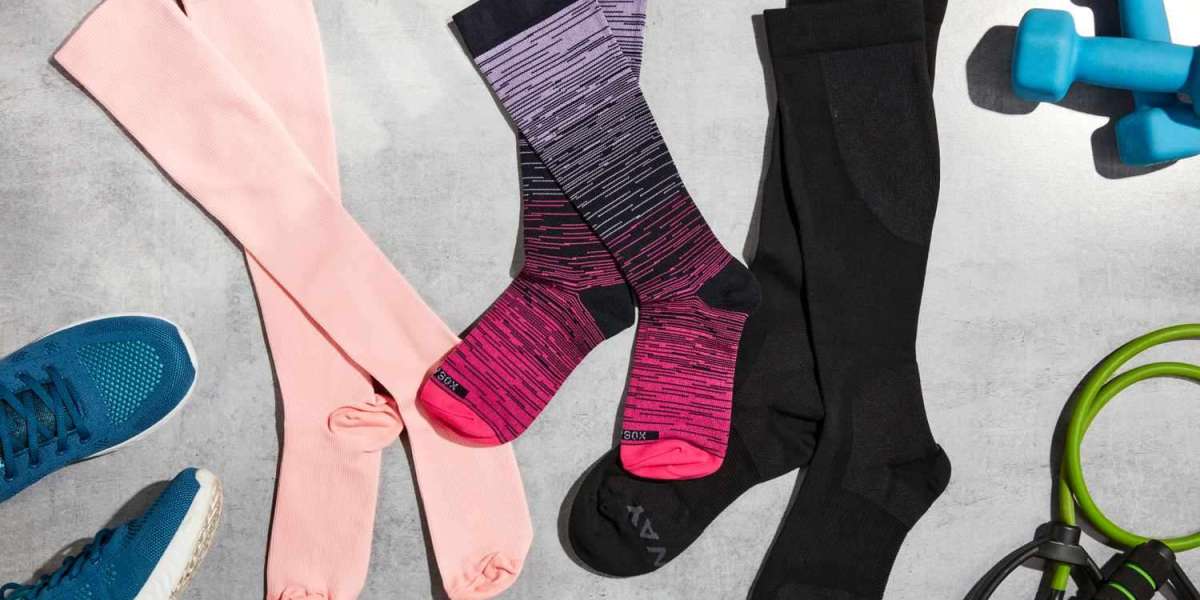Compression socks, once solely associated with medical use, have transitioned into the mainstream as an essential accessory for various activities and lifestyles. These specialized socks are designed to provide graduated pressure to the legs, aiding in circulation and offering a range of benefits. Understanding the types, differences, and advantages of compression socks can illuminate their importance in both health and everyday comfort.
Types of Compression Socks:
Medical Compression Socks: Primarily prescribed by healthcare professionals, medical compression socks are designed to manage conditions like venous insufficiency, edema, and deep vein thrombosis (DVT). They typically exert higher pressure at the ankle, gradually decreasing as they move up the leg.
Athletic Compression Socks: Tailored for athletes and fitness enthusiasts, these socks aim to enhance performance, reduce muscle fatigue, and expedite recovery. They often feature moisture-wicking materials and targeted compression zones to support specific muscle groups during activity.
Travel Compression Socks: Long periods of immobility during travel can increase the risk of blood clots and swelling in the legs. Travel compression socks mitigate these risks by promoting blood flow and reducing discomfort during extended journeys.
Fashion Compression Socks: Combining functionality with style, fashion compression socks offer the benefits of compression wear without compromising on aesthetics. They come in various designs, colors, and patterns, catering to diverse preferences while maintaining therapeutic compression levels.
Differences in Compression Levels:
Compression socks are available in different pressure gradients, typically measured in millimeters of mercury (mmHg). The compression level determines the intensity of pressure exerted on the legs and varies based on the intended use:
Mild (8-15 mmHg): Suitable for daily wear and mild discomfort, mild compression socks provide gentle pressure to improve circulation and alleviate swelling, making them ideal for long periods of sitting or standing.
Moderate (15-20 mmHg): Commonly recommended for individuals experiencing moderate swelling, fatigue, or varicose veins, moderate compression socks offer firmer pressure to support blood flow and reduce leg discomfort.
Firm (20-30 mmHg): Prescribed for medical conditions like chronic venous insufficiency and post-thrombotic syndrome, firm compression socks deliver significant pressure to manage severe swelling, venous ulcers, and prevent blood clots.
Extra-Firm (30-40 mmHg and above): Reserved for specific medical conditions and prescribed under professional guidance, extra-firm compression socks provide maximum pressure to address severe venous disorders and lymphatic issues.
Benefits of Compression Socks:
Enhanced Circulation: By exerting pressure on the legs, compression socks facilitate the upward flow of blood towards the heart, reducing the risk of blood pooling and improving overall circulation.
Reduced Swelling and Fatigue: Compression socks help alleviate swelling, achiness, and heaviness in the legs by preventing fluid buildup and supporting muscle function, making them invaluable for individuals who stand or sit for prolonged periods.
Improved Performance and Recovery: Athletes benefit from compression socks' ability to enhance oxygen delivery to muscles, minimize muscle oscillation, and expedite the removal of metabolic waste products, thereby promoting faster recovery and reducing post-exercise soreness.
Prevention of Blood Clots: Especially crucial during long flights or periods of immobility, compression socks reduce the risk of deep vein thrombosis (DVT) and clot formation by promoting blood circulation and preventing stagnation in the lower extremities.
Temperature Regulation: Certain compression socks feature moisture-wicking fabrics and breathable materials that help regulate temperature, keeping the feet dry and comfortable across various climates and activities.
In conclusion, compression socks offer a multifaceted solution to common leg-related issues, catering to diverse needs ranging from medical therapy to athletic performance enhancement and everyday comfort. Understanding the types, differences, and benefits of compression socks empowers individuals to make informed choices regarding their leg health and overall well-being. Whether for medical necessity, athletic performance, or everyday wear, compression socks stand as an accessible and effective tool for promoting healthier, more comfortable legs.








